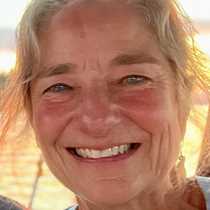Northern Svalbard: Ashore at Mosselbukta, then Sailing West
Yesterday’s ice report showed heavy ice ahead of us, so we modified our plans; rather than circumnavigating Spitsbergen, we turned around to further explore the north and west portions of the island.
This morning we went ashore at Mosselbukta, where we found remains of buildings from the late 1800s. The base was established in 1872 by the Swedish scientist/explorer Adolf Erik Nordenskjold. Later, scientists collected data here which confirmed that Earth is slightly flatter at its poles. We looked at the ruins: wooden planks, bricks, a stove - and tried to imagine what it was like to live here, even for a short time. On the other side of the bay, we walked across tundra covered with wet mosses, compact clumps of pink flowers, and a rocky, boulder-strewn slope. In the distance, reindeer walked across the landscape; at our feet were their tracks and scat. Above us, on rock cliffs, were hundreds of nesting kittiwakes. The vegetation below was bright green, fertilized by guano from the seafood-eating birds.
We spent the afternoon at sea, heading west. Borge Ousland gave a fascinating presentation about his two-man, 2007 expedition from the North Pole to Franz Josef Land, using kayaks. After his talk, we were feeling very appreciative for the lush comforts of our ship, the National Geographic Explorer.
In the late afternoon, our surroundings were dramatic: jagged mountaintops separated by large and small glaciers. Large patches of snow were stained pink with ice algae; life here clings to the most unlikely habitats! The ship wove a winding path between islands on the northwest corner of Svalbard. Breaks in the cloud cover provided dramatic lighting on surrounding mountains as we continued southwest.



